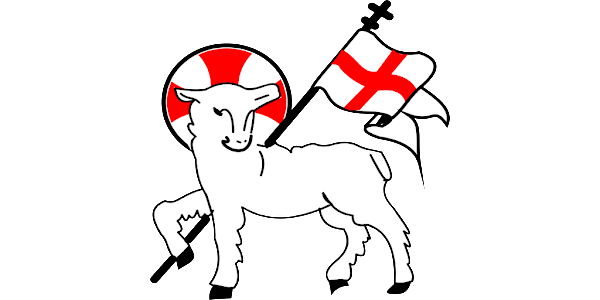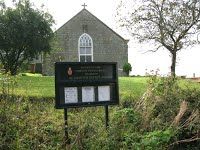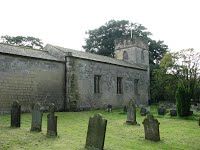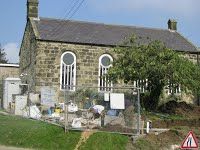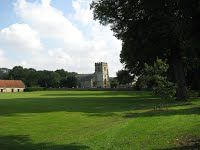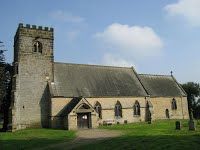Our Church Buildings
Acklam St John the Baptist
The church was built in 1794 as a Wesleyan Methodist Chapel, and superseded the old Anglican church which was demolished in the 1970s - the old churchyard remains at the east end of the village. The village setting is quite lovely, Acklam being a classic Wolds village in the midst of splendid countryside.
Visiting the church: The church is always open
Birdsall St Mary
This imposing church stands on top of a sharp rise to the north of Birdsall House. It was built in the early 19th Century, with the chancel a later addition by Hodgson Fowler, and is rich in impressive detail. The highlight is the interior, where the transformation of the church from a Georgian preaching room to a splendid estate church for High Anglican ritual is clear.
St Mary's replaced a much older church, remains of which stand picturesquely by Birdsall House, a short walk away.
The Lords Middleton, the Willoughby family, have owned Birdsall House and the estate since the early 18th Century.
The family continues to be closely involved in the church.
As you enter the church, note the Middleton arms in bronze above the main door.
Inside, particularly impressive are the altar front, the painted reredos behind the altar and the superb painted ceiling. There is high quality work throughout the chancel area, and some interesting stained glass, with three windows by Kempe, and two superb examples by Nicholson. The monuments, too, are high quality, including a 1729 memorial sculpted by Michael Rysbrack.
Visiting the church: St Mary's is open only by special arrangement. Contact us here to make an appointment
Burythorpe All Saints
The church of All Saints stands on a hillside to the west of the village, from where there are commanding views over the surrounding countryside. On a clear day, you can see the White Horse above Kilburn. You reach the church along a narrow lane through the fields. The present church, which replaced a much older building of which nothing now remains, was built in 1857-8 by JB and W Atkinson. The roof is remarkably steep. Inside, the church is simple and appealing, with wooden pews and a fine east window featuring stained glass by Gibbs of London. The church, so picturesque and surrounded by splendid countryside is a popular venue for weddings.
Visiting the church: The church is always open.
Langton St Andrew
Langton is one of the prettiest villages of Ryedale, and St Andrew sits proudly at the end of the broad green next to the primary school. Largely rebuilt in the early 19th Century, this simple, rather humble church has retained plenty of old stone and other materials from the earlier building, particularly on the north wall. Inside, there are a font and chancel arch, both from the 13th Century, and lots of 17th Century wood panelling. There is a very fine and touching monument from 1656 to Mary Ingram, who died giving birth to twins.
Visiting the church: St Andrews is open during the day
Leavening The Venerable Bede
The church of the Venerable Bede is a small chapel dating from 1850. As the picture from 2008 shows, major refurbishment took place recently to create a warm, comfortable setting for worship - there are even kitchen facilities and a WC, as well as wheelchair access.
The church stands in the centre of the village, just across from the Jolly Farmers pub.
Visiting the church: The Venerable Bede is open during the day
North Grimston St Nicholas
The church of St Nicholas is one of the most historically rich of the surrounding area, and is set well back from the main road amidst tall trees and greenery. From the outside, you can see clearly that the church has been substantially developed from the original 12th Century building. The fine tower, with a wonderful statue of St Nicholas, is of the 13th Century. The main doorway is also very old, and you can see traces of red limewash in the arches.
Inside, the chancel arch is 12th Century and it is likely that the church would have had to be rebuilt very early in its history, probably through subsidence. There is an excellent window by Kempe from 1884, and two complete medieval grave slabs, but the highlight is the massive 12th Century font, with its rich, vigorous carvings. These are of wonderful quality, especially the glorious Last Supper, and are to be compared with those on the font at Cowlam near Sledmere.
Visiting the church: St Nicholas is always open
Settrington All Saints
Set on the eastern fringe of this handsome estate village, All Saints is an outstanding example of a church which has grown in conjunction with the 'Big House' which stands directly next to it it, Settrington House. This continues an ancient tradition, whereby the protecting arm of the the family comes out into the church.
The church is the largest in our United Parish, and still holds some of our most important services. Visitors are of course welcome, and there is much to enjoy during a visit. The interior is a delight, light flowing in from the many windows. There are 13th Century arcades with fine columns, and a rare flat plaster ceiling, an example of 17th Century secularisation.
The 19th Century chancel is very fine, built in 1867-8 by JL Pearson on medieval footings, and would have seemed strikingly modern to the late Victorians. There is a handsome herringbone ceiling and a fine floor with inserted marble stones. Among the many good monuments are a fine piece by Fishers of York in rococo style, and a lovely brass of 1666 mentioning the civil war - ‘in time of war’. There are many 'Mousey' Thompson pews and other woodwork by his Kilburn studio.
The east window has glass by Clayton & Bell, from around 1868, featuring the deep ruby reds that are so characteristic of Clayton & Bell work. The south aisle chapel features a very fine arrangement by George Pace from 1951, where the 15th Centry and mid-20th Century ‘touch hands’ sympathetically. This side chapel is used for many of the smaller services that take place in the church. At the back of the church, note the tower doorway with shiplap construction under an ogee arch from the 14th Century. The fine tower itself is from the 15th Century, rising in three levels.
Visiting the church: All Saints is always open
Westow St Mary
The church was once known as St Mary of the moor or St Mary ad mora. It is thought to be built on Saxon foundations, and originally placed there as a monk’s cell, with a beacon light to guide people over the wolds from the monasteries of Bridlington and Beverley to Kirkham Priory. Rebuilt almost entirely in 1862 in the Early English style, using some of the ancient stone, some of the early memorials are built into the fabric. However, the tower is Norman, as is the font with cable decoration and the piscina.
Inside it has many interesting facets, including a rare cresset stone, thought to have come from Kirkham Priory, and a memorial to George Montaigne, Squire of Westow, who fought on the Royalist side as a cavalry officer in the Civil War of 1642. There are many other memorials and hatchments including the Royal Coat of Arms of George III positioned over the nave.
The original church was much larger, with a clerestory, the marks of which appear on the outside of the tower. The churchyard is large and contains burials from Westow, Firby and Menethorpe. It is situated almost a mile from the village, and is kept locked because of this. Keys can be obtained from churchwardens and other Village Church Council members.
Visiting the church: St Mary is open only by special arrangement. Contact us here to make an appointment
